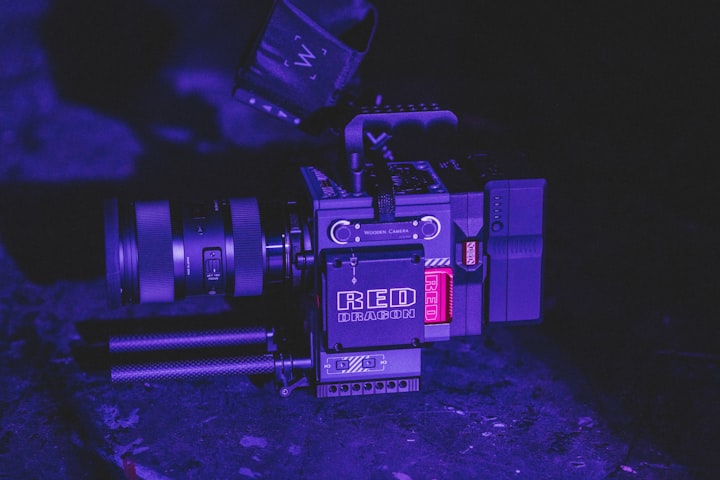3D printed battery of the future
3D battery

This could be what's to come
of battery-powered batteries.
It guarantees more power, better security, quicker charging and a longer shelf life.
And, theoretically, could take any form you want.
One company is going one step further and wants to change our perception of what a battery can even look like by 3D printing them. Private businesses and research labs are rushing to crack the code for a battery that could one day replace the ever-present lithium ion.
We should make a stride back and make sense of what a battery is.
Atypical batteries generate electricity by converting chemical energy.
We require a cathode, or positive end.
For this situation, a zinc-covered nail.
The anode, or negative end, is our copper penny.
We likewise need something to associate these two called the electrolyte.
That is where our potato comes in.
I'm about to destroy one here. Here, one.
The potato causes a chemical reaction at each end, and the anode actually lets loose electrons that travel back along the wire to the cathode.
Actually, what is converting that chemical reaction into electricity is this flow of electrons.
That didn't really help at all. as may be obvious.
However, if we add a few more potatoes, slight will probably work.
So that is the groundwork of any synthetic battery.
Lithium particle batteries are some
of the best forms of this.
However, there is room for improvement, and startups are modifying the electrolyte and anode, two essential design components.
- Most batteries today,
essentially every battery you will purchase.
has a liquid electrolyte inside. Because the electrolyte is full of lithium ions that move the charge around, we actually call them lithium ion batteries.
Excellent conductors are liquid electrolytes.
In any case, they're unstable. especially when it's damaged or heated up.
Additionally, if you watch the news, you've probably seen coverage of similar incidents.
Her phone, a Model S Plaid, caught fire earlier this week.
The problem that plagues these centers all over the country is something that may have sparked a fire at a local recycling plant.
-It makes perfect sense to us. An issue with safety exists.
Using a solid material that is less flammable and more stable is one option.
At the present time, bunches of organizations
building these strong state batteries are testing
with electrolytes produced using a wide range of materials
like pottery, glasses, and polymers.
The other huge update is seeing as an all the more impressive material
to use for your anode.
Graphite is used in standard lithium ion batteries, which already perform fairly well.
Yet, there is an all the more impressive competitor out there.
- The sacred goal for battery anodes
has been lithium metal.
Furthermore, that is not lost on individuals.
- So lithium metal has a higher limit
than different anodes like silicon or graphite,
yet, it's difficult to work with.
It can short the battery by forming these tiny, microscopic structures known as dendrites.
That has been a significant issue with liquid electrolytes.
However, using a sturdy material might make things better.
-The manner in which I ponder dendrites resembles the roots
of a tree framework.
So the roots are developing.
You want to prevent the roots from, you know,
sort of coming into your home.
So what do you do?
You erected a solid concrete wall or other obstruction, thereby mechanically stopping.
-So a decent strong electrolyte can bear upping
to those little dendrites
regardless take into consideration the simple progression of particles this way and that.
These new materials have improved significantly over the past few years.
Leading startups are currently attempting to move their pilot batteries from the lab into a factory.
And a single business based in California.
is swinging even more strongly.
They want to 3D print solid-state batteries with lithium metal anodes that they are developing.
-Challenging the manufacturing process at some point is the only way to move toward batteries that are safer, more sustainable, and superior.
So most batteries today are made
with a cycle called roll-to-move producing.
For each battery layer, the materials are cut down after being rolled out in long sheets.
On the other hand, Sakuu might be able to fit more layers into the same amount of space using 3D printing, which would increase the battery's overall capacity.
So dislike
where you have them in a pocket
also, the battery is right inside, the layers are inside.
Sealing it is required.
However, the company hopes to compete with solid-state startups and lithium-ion manufacturers that continue to use roll-to-roll by producing these batteries in the printer using our printer platform.
Therefore, a superior battery design and manufacturing technology are absolutely necessary.
Remaining with roll-to-roll
without a doubt wouldn't empower us
to try and have higher energy densities than any other individual.
Okay, there is one major caveat to all of this.
In their laboratory, Sakuu has 3D-printed solid-state batteries, but their prototype has not yet been fully printed.
In point of fact, we were unable to even film the prototype of the 3D printer.
According to the company, this is because there is simply too much proprietary activity going on that they are not yet ready to reveal to the general public.
They are actually building this prototype, testing it, and trying to figure out how to use this manufacturing process to make the best battery.
The 3D-printed model of that 3D printer is actually what we are about to demonstrate to you.
Meta, I am aware that this platform can also use multiple.
Therefore, it is able to print polymers, ceramics, and metals.
Additionally, the primary factor that contributes to its speed is that it prints those layer by layer.
How quick? We don't know for sure yet, but Sakuu hopes that each machine will one day be able to store 40 megawatt hours of energy annually.
That is roughly equivalent to 500 electric car batteries per year in normal terms.
However, this prototype operates differently than a standard 3D printer.
Generally a printer stores a layer of material,
hangs tight for it to set, and afterward adds the following layer.
Each layer is simultaneously printed and quality controlled here.
Within the system, excess material can be recycled.
The layers are stacked firmly together at the end furthermore, out pops a battery.
However, the most surprising benefit of this procedure is not its cost, safety, or power, It's truly about structure factor.
Take a look at these batteries!
The majority of them are cylindrical or rectangular.
This is because creating distinct shapes using roll-to-roll is difficult.
It would necessitate new tools, produce more waste, and probably cost more.
The possibilities for 3D printing are far greater.
- In the not-too-distant future, batteries will actually become an integral component of a product.
If you look at AR/VR glasses, for instance, the temple arm could be a printed battery.
Or you might look at a cell phone and see that the case actually contains a battery.
Therefore, the battery is not just stronger by itself.
It can likewise occupy in dead space.
maximizing its footprint in a product and thereby increasing power.
You wouldn't need to plan an item essentially
around a battery.
You could plan the battery around your item.
Furthermore, this is clearly not the genuine printer.
So, what is one of these's similar footprint?
For this initial one.,
The footprint has a length of about 10 meters.
Isn't this our first prototype at this point?
Complete reevaluation is clearly dangerous.
The business says that their process could cut manufacturing costs, but they wouldn't tell us how much the printer actually costs.
In addition, you are introducing a novel manufacturing method into an established sector, which will always be challenging.
In addition, they are not the only ones pursuing this strategy.
Blackstone Resources and Photocentric are two other businesses working on 3D-printed batteries.
While this Research and development has been happening.lithium particle batteries are simply getting less expensive
also, more remarkable.
That is truly difficult to rival.
Sakuu is currently constructing its first factory and anticipates providing sample batteries to customers by 2023.
Therefore, we will only use this facility to manufacture our own batteries, which is of course required to demonstrate the procedure and demonstrate to everyone that our technology functions effectively.
While new companies like Sakuu
are scrutinizing their original items,
the requirement for further developed batteries is just developing.
The objective isn't simply to get a superior battery into your telephone,
it's rising reach for electric vehicles
furthermore, huge scope stockpiling for a decarbonized energy network.
But newcomers can't just be a little better to compete in the lithium ion industry.
Consequently, in order for this material to become marketable, we must make them perfect.
Because if it isn't perfect, they will become a significant obstacle in our efforts to create a battery that can withstand time and power everything we want.






Comments
There are no comments for this story
Be the first to respond and start the conversation.